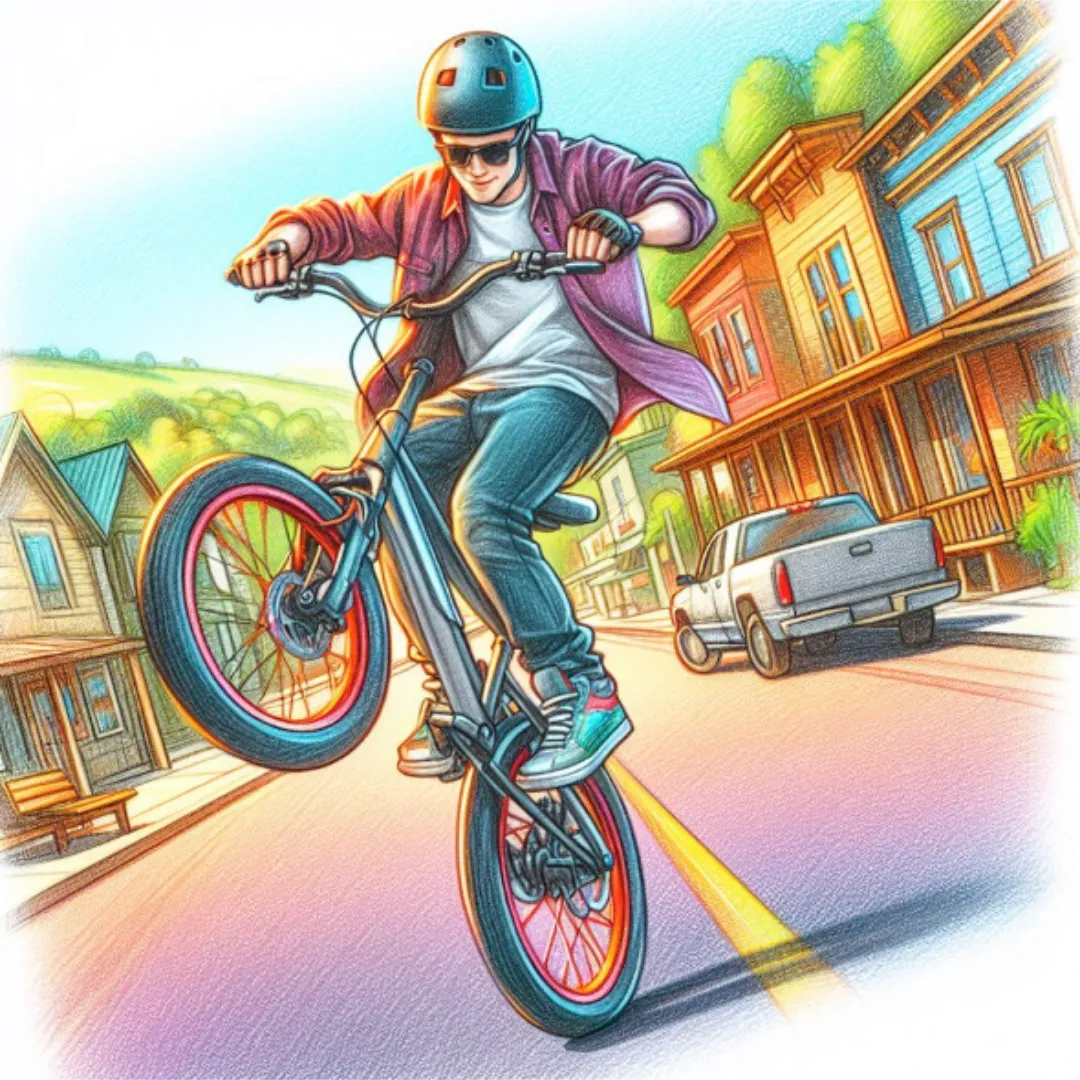



THE BELLEMONT PROJECT
Strategic e-Bike Safety Solutions
Providing a revolutionary six-point plan to help communities with professional, insightful, and effective strategies.
Read our book for parents:

It would be easy to just call them spoiled brats.
But it's better to motivate good conduct.
What's really going on?
At the Bellemont Project, we see social trends as vital when lives are at risk. E-bikes, once a trend among seniors, have now surged among teens since the pandemic due to several factors including lowered prices. They've evolved from a transportation solution to a sought-after status symbol. And with that, we're seeing behavior changes.
A lot has changed, fueled by peer pressure.
YouTube and other platforms have fueled risky trends by allowing promotional videos of unsafe, aggressive riding practices, popularizing stunt riding worldwide. Risky maneuvers like power wheelies and events like "street takeovers" entice teens, while influencers often receive incentives for their participation, turning viral anti-heroes into misleading role models. Peer pressure to conform has helped spread the behaviors nationally.
Unsavory sales tactics can make it worse.
Certain popular brands have misled consumers by claiming their multi-class e-bikes are legal, despite these speedy motorized bikes being classified as out-of-class in over 30 states. This deceptive marketing not only misguides shoppers but also contributes to safety and legal concerns nationwide. Notably, a class-action lawsuit has been filed against one major manufacturer, alleging the company misrepresented its bikes in this way.
What can your city do?
The Bellemont Project champions e-bike safety by guiding communities in best practices and innovative initiatives like the Incline Program, which addresses reckless riding with proven behavior management techniques. By adopting the Incline Program, your city can effectively manage many of the conduct issues, like excessive speed, and transform e-biking into a safer micro-mobility option and sport.
Designed to motivate better riding conduct, the Incline Program is the first part of our Six-Point plan for improved e-bike safety. Learn about the entire plan on the "Solutions" tab at the top of this page.
Work with the Bellemont Project to help teens and tweens ride more safely.

STILL NOT SURE?
Frequently Asked Questions
Civic leaders have questions. Here are a some quick answers...
DON'T LEAVE E-BIKE SAFETY TO CHANCE.
The strategies you learn can save lives.
Question 1: How will this impact our limited resources?
We understand that resources can be limited, which is why the Bellemont Project offers a cost-effective and time-saving solution. When compared to the potential damages and consequences of lawsuits arising from e-bike incidents, our program offers significant savings. By investing in proactive safety measures, you'll not only protect your community but also avoid the costly repercussions of legal issues. In accordance with our social-enterprise mission, all summit fees are affordable for participating municipalities, and our extensive bonuses further ensure that you receive maximum value for your investment. Our time-sensitive scheduling requires a minimal investment of manpower resources to reap potentially huge rewards for participation. Additionally, all introductory webinars are currently free to the general public.
Question 2: Can't we wait until we see a larger problem locally?
It's easy to underestimate the urgency of addressing e-bike safety, but sales are soaring throughout the nation. At the same time, e-bike stunts like the "power wheelie" have exploded in popularity, fueled by social media videos modeling dangerous behavior on city streets. Many cities are not fully aware of the true extent of the problem unless they are actively monitoring neighborhood groups that show "complaint" comments on social media. By proactively participating in the Bellemont Project, you can get ahead of rising issues, prevent potential accidents, and foster a safer community for everyone.
Question 3: How can we be sure that the Bellemont Project is the right choice for us?
The Bellemont Project is based on Beth Black's extensive research and real-world experience in managing e-bike safety. With degrees in Social Ecology and writing from UC Irvine, a California Multiple Subject Teaching Credential, and hands-on experience running an e-bike shop, Beth brings a comprehensive and unique perspective to this issue. Additionally, her connections with experts in related fields ensure that our approach is both innovative, effective, and informed by e-bike best practices. Choose the social enterprise dedicated solely to e-bike safety! The Bellemont Project is a proud California Certified Small Business.
BellemontProject.com
